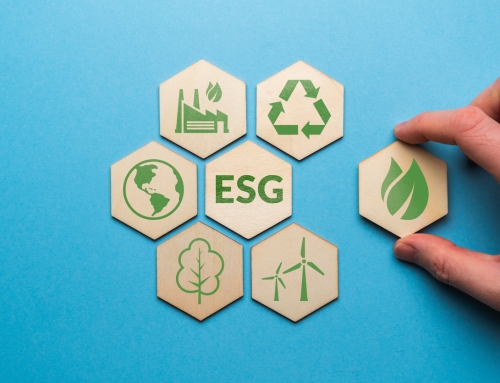By Mike Eckenroth
February 12, 2018 – What comes to mind when I say “energy efficiency”?
There was a time where energy efficiency seemed out of reach for many organizations. Upgrades were too expensive. Technology was too new or too complicated to implement. Results and success stories seemed too good to be true.
But in recent years, that has all changed. Energy efficiency is now attainable and profitable for manufacturers, retailers and property managers like you.
You can modernize your facilities to be more energy efficient. What’s more, you can do it in a way that will not interfere with regular business operations and (perhaps most importantly) will not break the bank.
Energy efficiency initiatives don’t have to seem pie-in-the-sky. With on-bill financing options through your energy supplier, you can spread out the capital risk of an upgrade over time so the project essentially pays for itself. Your energy supplier fronts the capital for your efficiency project, putting less strain on your organization’s finances. The costs of the project are then paid back gradually per a signed energy supply agreement.
On-bill financing options allow you to start your efficiency upgrade projects immediately. The cost savings you receive through reduced energy consumption ultimately offsets the cost of the efficiency project itself. The result is an upgraded facility that’s less costly to manage and leaves a smaller carbon footprint.
On-Bill Financing for Energy Efficiency: How It Works
Your energy supplier fronts the cost for your project. You pay that cost back over the course of your energy supply agreement.
During your initial on-bill financing agreement, a fixed fee is added to your energy invoice. Combined with the reduction in usage provided by the efficiency project, you receive a “net zero” impact to monthly energy costs.
After your on-bill financing agreement has ended, your reduction in usage may lead to an overall long-term reduction in costs. You now have new equipment, happier stakeholders and lower forward energy costs.
Common Energy Efficiency Upgrade Projects
Lighting Improvements
LED lighting and interior/exterior retrofits are some of the most popular efficiency projects we help clients manage.
For one of our clients, Southern Insulation, our team facilitated an LED lighting retrofit of their office and warehouse. This provided better lighting in areas where the brightness of the bulbs and the constant outages was becoming an issue for productivity. From the initial audit through the upgrade, we managed 100% of the project through a chosen supply partner.
During the payback period, Southern Insulation’s costs were still less than what they were paying prior to the project.
Electric Motors & Drives
Another popular kind of project involves reducing consumption on running motors and drives. Our team has advised on high-efficiency motor replacements, as well as the utilization of variable frequency drives.
These types of upgrades are especially popular with manufacturing clients who are looking to improve their overall load profile and meet environmental goals.
Learn More: Ask your Energy Advisor About On-Bill Financing
Water & Sewer Conservation
Water and sewer conservation upgrades also contribute to reducing an organization’s impact on the environment. Property management and senior living communities have come to our team for managing projects like low-flow faucet and showerhead installations.
In 2014, for instance, our team facilitated the “Smart Valve” installation at Newport Condominium in Chicago. We introduced the concept, negotiated the proposal, and reported back on ROI over the 3-year period to follow.
For these properties and others we’ve assisted, the cost savings has been a welcoming sight. They’ve created several positive outcomes – from upgraded amenities (pools, washer/dryer, etc.) to overall higher tenant satisfaction scores.
Building Automation Systems (BAS)/Energy Management Control Systems
Building Automation Systems (BAS) optimize building temperature, humidity, pressure and energy use. Once in place, BAS or control systems give facilities the ability to cut back on their load at will with the flip of a switch.
By reducing usage, these clients reduce the stress they put on the grid and subsequently help systems run more efficiently.
HVAC & BAS projects are often coupled with demand response programs, where organizations like schools have an opportunity to generate additional revenue just by participating. BAS & control systems give these facilities a leg up in their efforts to curtail usage.
Even as energy costs decrease, demand costs can increase. Efficiency projects are a great way to mitigate or offset those costs. By modernizing facilities with on-bill financed efficiency upgrades, your company can make your energy strategy positive and profitable.
Have questions about one of these or some other energy efficiency upgrade options? Give me a call at 443-833-8224 and we can discuss bringing your project to fruition with on-bill financing.
About The Author

Mike is an energy professional based out of Baltimore, Maryland with a strong engineering and purchasing background. His specialties include energy efficiency and strategic commodity procurement. Growing up in the shadow of Three Mile Island nuclear power plant, Mike has an intimate stake in a grid with safe, reliable, and cost-effective energy generation – which he leverages into an energy strategy that provides security for his clients.
Michael can be reached via email at meckenroth@naniaenergy.com or via phone at 443-833-8224.










Leave A Comment